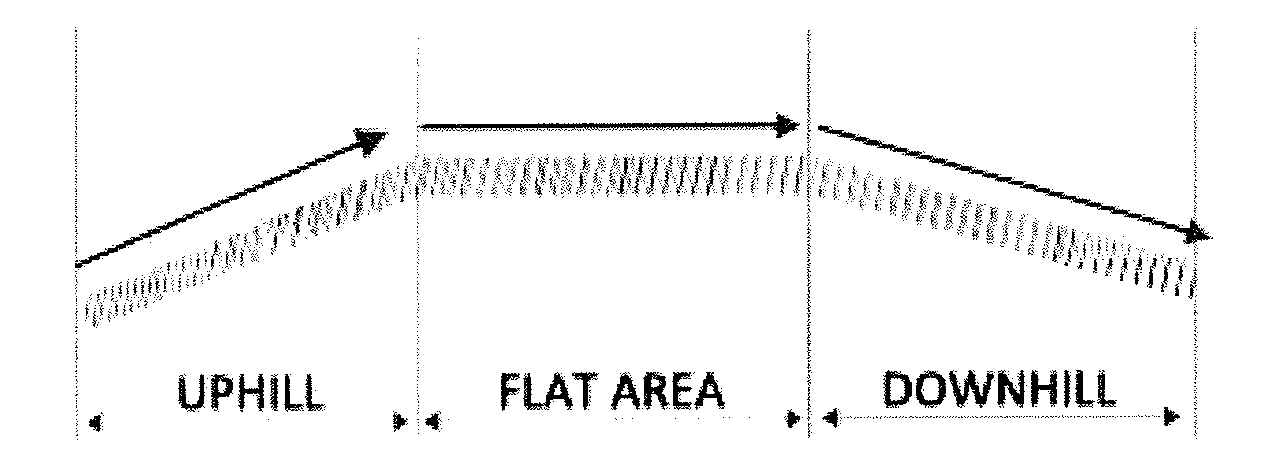1. PUBLIC ROAD - any terrestrial communication channel dedicated to pedestrian or vehicle traffic, if open to public traffic.
2. RESIDENTIAL AREA - area in a locality where special traffic rules apply.
3. CARRIAGEWAY (ROADWAY) - portion of the road intended for vehicles circulation.
4. ROAD VERGE - side strip between of the carriageway and the edge of the roads platform; generally, in cities there is no verge as there are sidewalks.
5. LANE - a longitudinal subdivision of the carriageway, reflected by marking (or otherwise) - if it has an appropriate width for easy circulation of a series of vehicles other than those travelling on two wheels.
6. HARD SHOULDER - (highways) - strip located on the far right of the highway, intended only for waiting in cases of force majeure.
7. HIGHWAY - road of high capacity and speed, reserved exclusively for motor vehicles, which does not serve adjacent properties and which:
• Has two distinct carriageways for each way, separated by an area not designed for circulation (median).
• Has at least 2 lanes in each direction (and emergency lane).
• Is not crossed by other roads, railways, tram ways at the same level.
8. MOPED (MOTOR-CYCLE) - vehicle with two, three or four wheels, fitted with swait ignition engine with cubic capacity of no more than 50 cm3 (or other type of engine - may even be electrical, with maximum power up to 4 kW) and whose maximum speed does not exceed 45 km/h.
9. VEHICLE - mechanical system, with or without engine (propulsion), often used for transporting people or goods or for execution of works (namely both the ones without an engine: bicycles, animal drawn wagons, vehicles pulled or pushed by hand, and the ones equipped with engine: mopeds, motor vehicles, buses, trucks, etc.).
10. MOTOR VEHICLE - vehicle fitted with an engine (a mechanical propulsion device). Trolleybuses and road tractors are considered motor vehicles as well.
• Trams and mopeds (motor-cycles) are not considered to be motor vehicles.
• The agricultural and forestry tractors and construction vehicles, which travel occasionally on the road, are not considered to be motor vehicles.
11. MAXIMUM ALLOWABLE WEIGHT - the maximum total weight approved (after homologation) for a loaded motor vehicle (CURB WEIGHT + MAXIMUM LOAD).
12. VEHICLE WITH OVERSIZE LOAD AND/OR OVERWEIGHT LOAD - vehicle which, due to its dimensions or of the goods carried, exceeds the maximum allowable length, width or height or the maximum allowable weight.
13. CONVOY - vehicle or group of vehicles accompanied by at least one police motor vehicle equipped with special acoustic and visual (bright red lights) means of alert.

All public roads have two ways (both ways) or one way (one-way traffic). Each way may have one or more lanes.
• THE CENTER LINE (ROAD AXIS)
It is an imaginary line or a marking which separates the two ways of travel; the marking may consist of solid, dashed or mixed lines.
Sometimes the road axis coincides with the middle of the road (with the axis of symmetry), sometimes it does not.
EXAMPLES:


• SLOPE ROAD - an ascending or descending road (inclined)
UPHILL = ASCENDING
DOWNHILL = DESCENDING

• FLAT ROAD (FLAT AREA) - road not ascending or descending (without slope).
• ALIGNMENT (STRAIGHT ROAD) - road without turns.

The road signing includes:
1. Traffic signs
2. Markings
3. Traffic signals (light signals)
• Level crossing signals
• Traffic lights
• Flashing yellow (amber) light
4. Special acoustic and light alert signals
5. Police signals
6. Train (agents) signals
7. Motor vehicles drivers signals
8. Road workers signals
9. Army signals
10. School patrol signals - at zebra crossings near schools
11. Blind man traffic signals (with the white cane)
TYPES OF TRAFFIC SIGNS:
a. Warning traffic signs
b. Regulatory traffic signs
• Right-of-way traffic signs
• Restriction or prohibition traffic signs
• Mandatory traffic signs
c. Direction and information traffic signs
d. Traffic signs for road works
Method of installation:
• Usually on the right. Sometimes they may be placed on the left or both on the left and right (repeated), if considered they are less visible.
• Can also be mounted above or on the other side of the intersection.
The significance of a traffic sign - applies for the full width of the carriageway open for the travel of the drivers it addresses to.
When installed above the lane, its significance is valid only for that lane.
The traffic signs have special shapes and colors enabling them to be distinguished earlier, in order for the driver to fully know their meaning (if they are for warning - triangular, prohibitory - round (in red), right-of-way - shapes different from all the others, etc.).